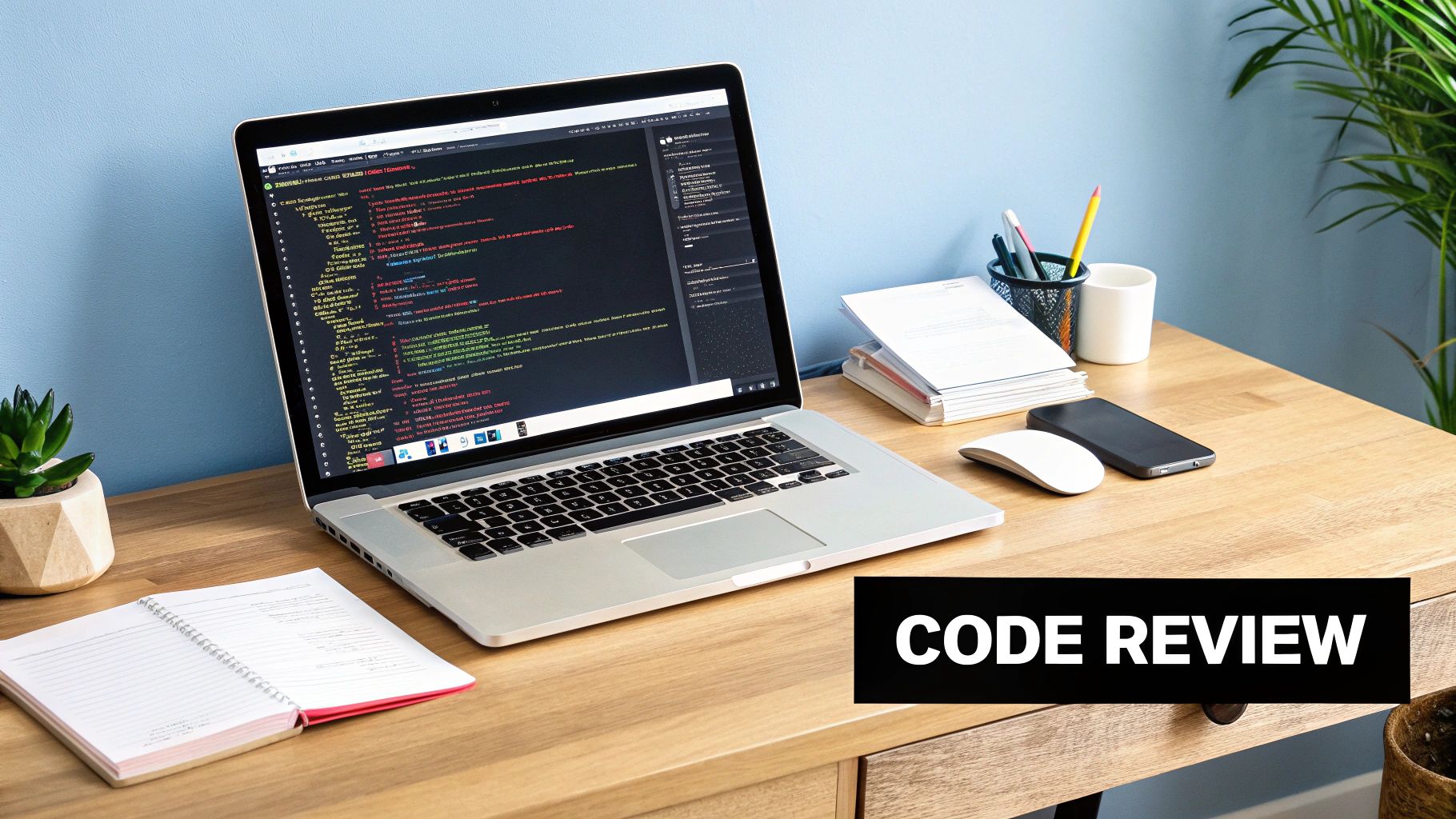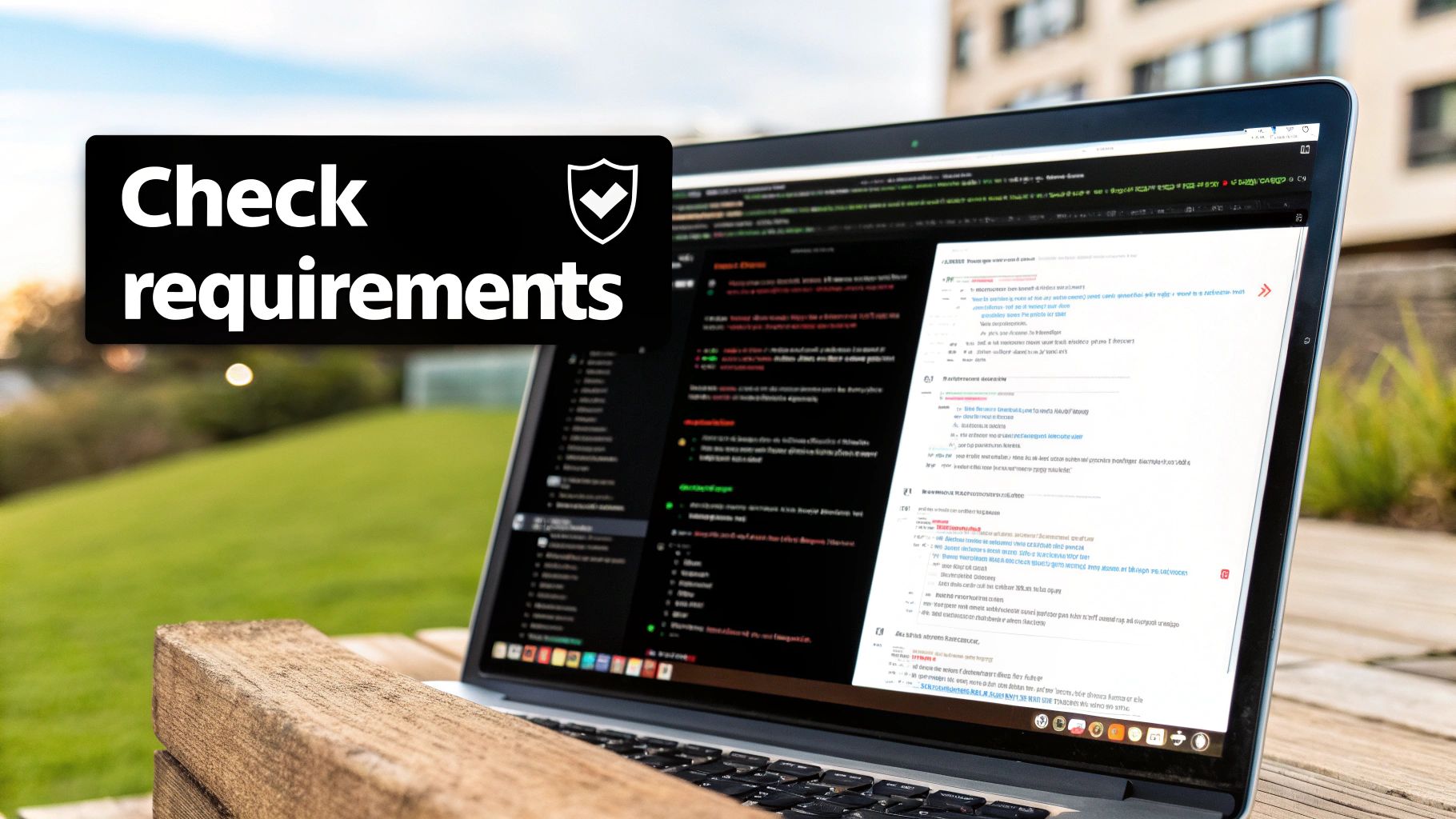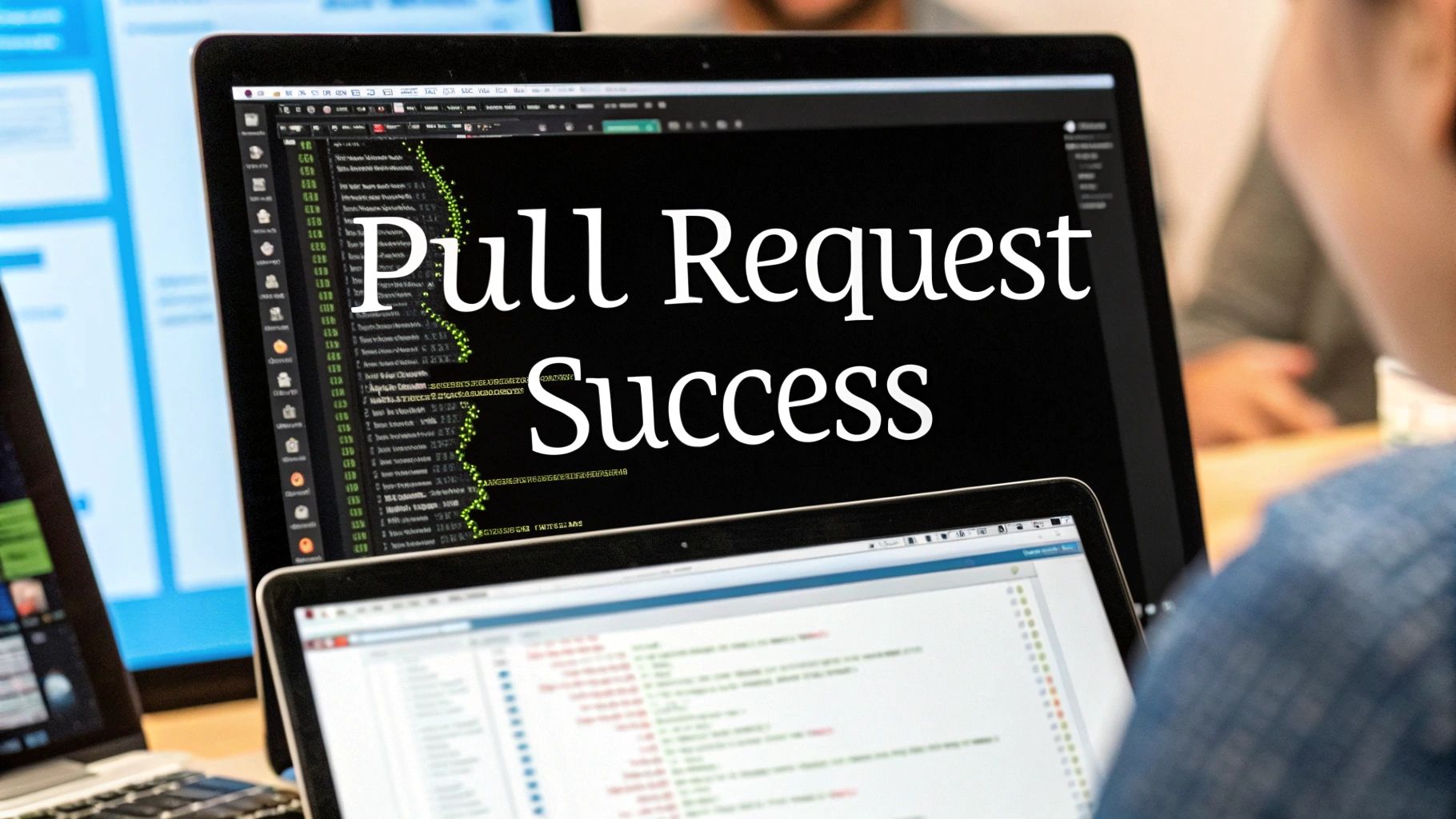Essential Pull Request Checklist: GitHub Best Practices for Code Review Success
Understanding GitHub Pull Request Fundamentals
A pull request (PR) is a core collaboration tool in software development. Think of it like submitting a document for team review before publishing - developers use PRs to propose code changes, get feedback, and ensure quality before merging into the main codebase.
The Importance of Pull Requests
Good pull request practices help teams build better software together. When used well, PRs catch bugs early, maintain consistent code quality, and help share knowledge across the team. The review process creates natural opportunities for mentoring and skill-building between teammates.
Utilizing the GitHub Pull Requests Dashboard
The GitHub Pull Requests dashboard gives teams visibility into their development process. Project maintainers can track contributor activity, response times, and outside participation. This data helps assess project health and identify areas for improvement. Learn more about analyzing GitHub pull requests here.
Key Metrics and Insights
Smart teams keep an eye on key PR metrics to spot issues early:
- Number of open pull requests
- Average review time
- Frequency of merged changes
For example, if open PRs start piling up, it may signal a need for more reviewers or a simpler review process.

When teams understand pull requests well and use GitHub's tools effectively, they can deliver better code more smoothly. This foundation sets up the pull request checklist we'll explore next.
Building Your Comprehensive Pull Request Checklist
A well-organized pull request (PR) checklist makes the code review process on GitHub smooth and effective. When used properly, it guides both the submitter and reviewer through key aspects that need checking before merging code. This helps catch issues early, boost code quality, and speed up development.
Core Components of a Pull Request Checklist
A solid GitHub PR checklist should examine these main areas:
- Code Functionality: Check if code works as expected and handles edge cases correctly. The code should behave properly across different scenarios and conditions.
- Code Style and Standards: Verify code follows project style rules. Clean, consistent code style makes future maintenance much easier.
- Testing and Validation: Include proper unit tests, integration tests, and end-to-end tests with good coverage. Thorough testing prevents bugs and keeps code stable.
- Documentation: Add clear code comments and update external docs as needed. Good documentation helps others understand and maintain the code later.
- Security: Look for potential security issues like SQL injection, cross-site scripting (XSS), and exposed sensitive data.

Adapting Your Checklist for Different Projects
While core checklist items stay similar, you should adjust them based on project needs. A project with sensitive data needs stronger security checks, while a small project may need less documentation. This keeps the checklist relevant and manageable.
Example Pull Request Checklist for GitHub
Here's a sample checklist you can modify for your GitHub projects:
- Functionality: Features work correctly and as designed
- Code Style: Code matches project style guide
- Tests: Unit tests pass with 80% coverage minimum
- Documentation: Updated code comments and README
- Security: No obvious security flaws introduced
Implementing Your Checklist
You have several options for adding your PR checklist on GitHub. You can create a markdown file, set up a PR template, or use tools like Pull Checklist. This tool offers automated checks and reports to help track progress across projects. Regular use of a PR checklist leads to better code quality and stronger team collaboration.
Leveraging GitHub Actions for Pull Request Automation
GitHub Actions provides powerful automation capabilities that make pull request (PR) workflows significantly more efficient. While manual code review is essential, automating repetitive checks helps your team focus on high-value development work and improves code quality.
Automating Key Pull Request Checks
GitHub Actions enables you to automate critical PR checks including:
- Code Style Verification: Automatically enforce project style guides using linters to maintain consistent code formatting and reduce style-related discussions in reviews
- Test Suite Execution: Run your test suite whenever a PR is created to catch issues early and give developers quick feedback
- Preview Environment Deployments: Create temporary test environments for each PR so stakeholders can validate changes in a production-like setting
Implementing GitHub Actions for Your Pull Request Checklist
Setting up GitHub Actions is straightforward - you define workflows in YAML files within your repository. These workflows specify what actions to run and what triggers them, like creating a new PR.

For example, you might create a workflow that runs tests when a PR is opened, or one that checks code formatting and reports any style violations back to the PR.
Choosing the Right Actions for Your Needs
The GitHub Marketplace offers many pre-built actions for PR automation, including:
- CodeQL: Find potential security issues through static analysis
- Super-Linter: Run multiple code style checks in parallel
- Cloud Deployment Actions: Simplify deploying to major cloud providers
The Pull Request Stats action provides helpful metrics about your team's review process, like average review time and comment volume. These insights can highlight process bottlenecks and help optimize workflows.
Building a Robust Automated Pipeline
By combining multiple GitHub Actions, you can create a comprehensive automated pipeline that validates PRs against your checklist requirements. This helps catch issues early while ensuring consistent quality standards.
A well-configured pipeline serves as a safety net for your team, automatically verifying that PRs meet requirements before they can be merged. This gives developers more time to focus on writing great code rather than manual verification tasks.
Measuring and Optimizing Pull Request Performance
A solid pull request process starts with good checklists and automation, but top-performing teams take it further. They actively track key metrics, identify problems, and make data-driven improvements to their GitHub PR workflow.
Key Performance Indicators for Pull Requests
Smart teams look beyond just counting open PRs and focus on metrics that matter:
- Average Time to First Review: The time between PR creation and first feedback. Long delays here can block progress.
- Average Review Time: Total duration from PR creation to merge. Shows how efficiently reviews are completed.
- Cycle Time: How long PRs take to go from open to merged. Shorter is better for quick delivery.
- PR Size: Tracks the scope of changes. Smaller PRs are easier to review well.
Identifying and Eliminating Bottlenecks
Once you have these metrics, patterns start emerging. A consistently high time to first review might mean you need more reviewers or better prioritization. Long review times could point to complex code or unclear requirements. Fixing these issues through process changes or training helps your team work more smoothly.
Data-Driven Improvements for Pull Requests
Using real data helps teams make smarter choices about their workflow. This could mean setting PR size limits, creating clearer review guidelines, or adding automated checks. The Pull Request Analytics action on GitHub Marketplace gives detailed reports on team and developer metrics. For example, it shows that one developer takes 3 hours 34 minutes for reviews while another takes 4 hours. These insights help spot differences between team members and areas needing work. Reports come in JSON or Markdown and can focus on specific metrics or users.

Tracking Progress and Celebrating Wins
Remember to monitor improvements over time and recognize team achievements. Regular metric reviews show the real impact of your optimization work. This positive feedback keeps teams excited about improving their PR process and helps build a more efficient development workflow.
Scaling Pull Request Management for Enterprise Teams
Managing pull requests (PRs) in large organizations requires thoughtful planning and the right tools. When teams handle hundreds or thousands of PRs across multiple repositories, they need proven approaches for maintaining quality while keeping development moving forward.
Prioritizing Reviews and Managing Complex Dependencies
The first step is having a clear PR prioritization system. Some changes affect critical systems and need immediate attention, while others can wait. Successful teams use labels to mark PR importance and assign dedicated reviewers to high-priority changes. Breaking large changes into smaller, focused PRs also helps by making reviews more manageable.
Teams also need ways to handle dependencies between PRs, especially when multiple groups work on connected codebases. Good communication between teams is essential. Using dependency maps and cross-team review processes helps avoid integration issues that could block progress.
Maintaining Consistency and Coordinating Reviews
Clear guidelines and automated tools help maintain consistent code quality across an organization. A pull request checklist ensures all teams follow the same standards for code style, testing, and documentation. Using automated linting and formatting tools catches style issues early, reducing back-and-forth during reviews.
For distributed teams, asynchronous communication and clear expectations are key. Tools that support async discussions and provide visibility into PR status help teams collaborate effectively. Having straightforward protocols for giving and responding to feedback keeps reviews moving forward.
Getting Insights From GitHub Data
Looking at PR patterns across your organization can reveal ways to improve. For example, you can use the GitHub API to analyze PR activity across private repositories within specific date ranges. This data helps identify bottlenecks and track progress over time. Data-driven insights let teams make smart changes to their PR processes as they grow. By focusing on proven strategies and helpful tools, organizations can build PR workflows that scale well and maintain high code quality.
Fostering Effective Review Collaboration
Code review success depends on clear communication and teamwork, going beyond just having a good pull request checklist on GitHub. When done right, reviews become valuable learning opportunities rather than bottlenecks.
Writing Effective Pull Request Descriptions
A good PR description helps reviewers understand your changes quickly. Include:
- What changes you made
- Why they were needed
- How you implemented them
For example, instead of "Fixed login bug", write "Fixed user authentication timeout that was causing random logouts by increasing session duration to 24 hours."
Always link to related issues or tasks to provide context about how your changes fit into the bigger picture.
Providing Constructive Feedback
Focus feedback on specific improvements rather than general criticism. Instead of "This code needs cleanup", say "We could improve readability by extracting this logic into a separate function and adding comments explaining the business rules."
When giving feedback:
- Be specific and actionable
- Suggest solutions
- Keep a positive, helpful tone
- Reference style guides or patterns
Handling Review Iterations
Reviews often need multiple rounds of changes. To keep things moving smoothly:
- Respond to feedback promptly
- Address each comment clearly
- Use GitHub's threaded comments to track discussions
- Mark resolved items as completed
Having a clear pull request checklist helps track progress through iterations. Each round should bring the code closer to the desired quality.
Building a Positive Review Environment
Create an atmosphere where people feel comfortable giving and receiving feedback:
- Celebrate improvements in code quality
- Recognize helpful reviewers
- Handle disagreements professionally
- Focus discussions on finding the best technical solution
- Share knowledge openly
Celebrating Team Progress
Track and celebrate review process improvements:
- Reduced average review time
- More thorough feedback
- Better documentation
- Faster bug detection
- Knowledge sharing wins
Pull Checklist helps teams implement effective review processes with automated, condition-based checklists. The GitHub Marketplace app offers required tasks, blocking checks, and audit trails to ensure high-quality reviews. Try Pull Checklist free today to improve your team's code review workflow.
